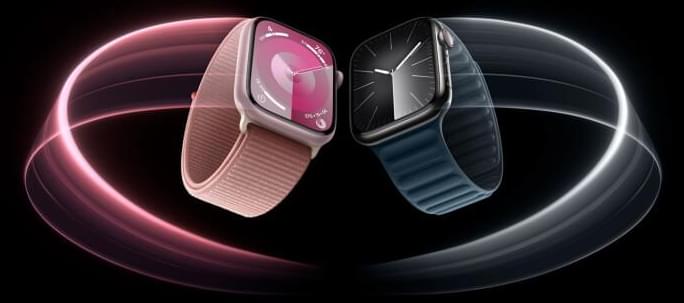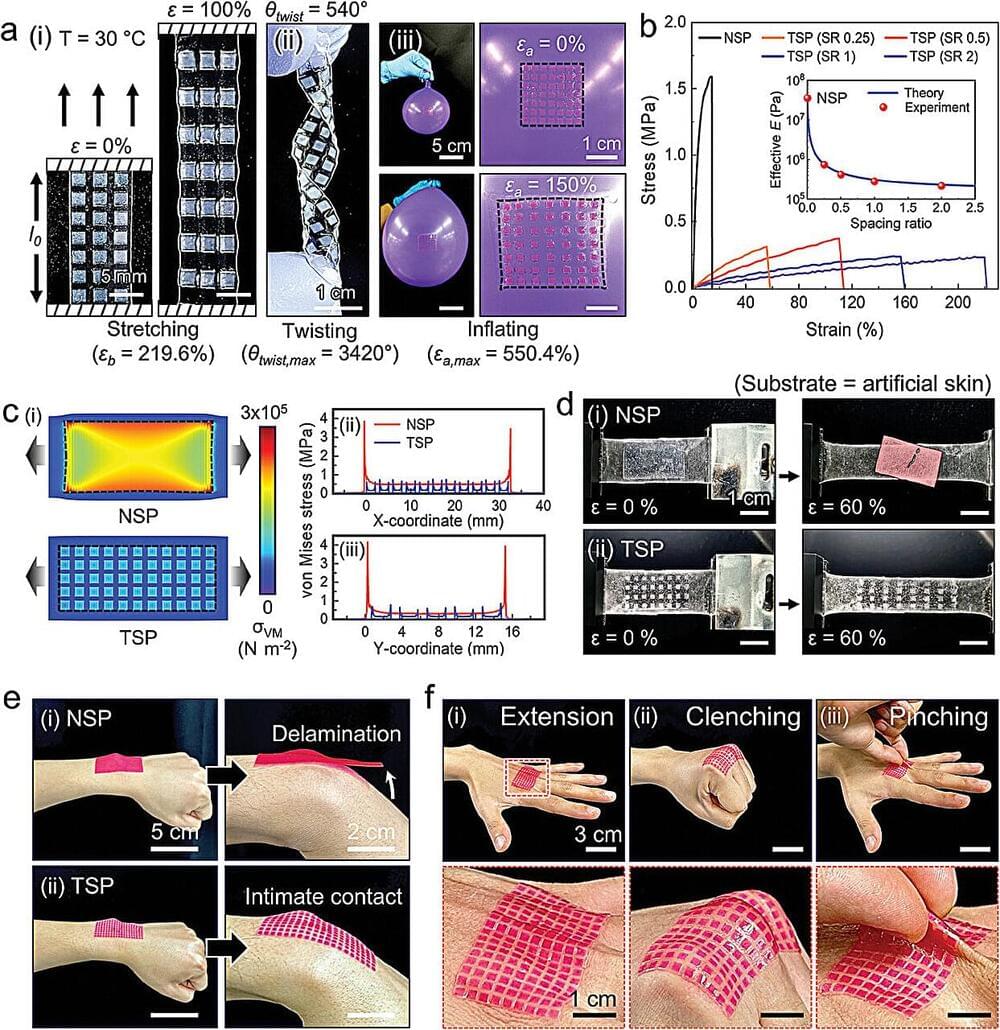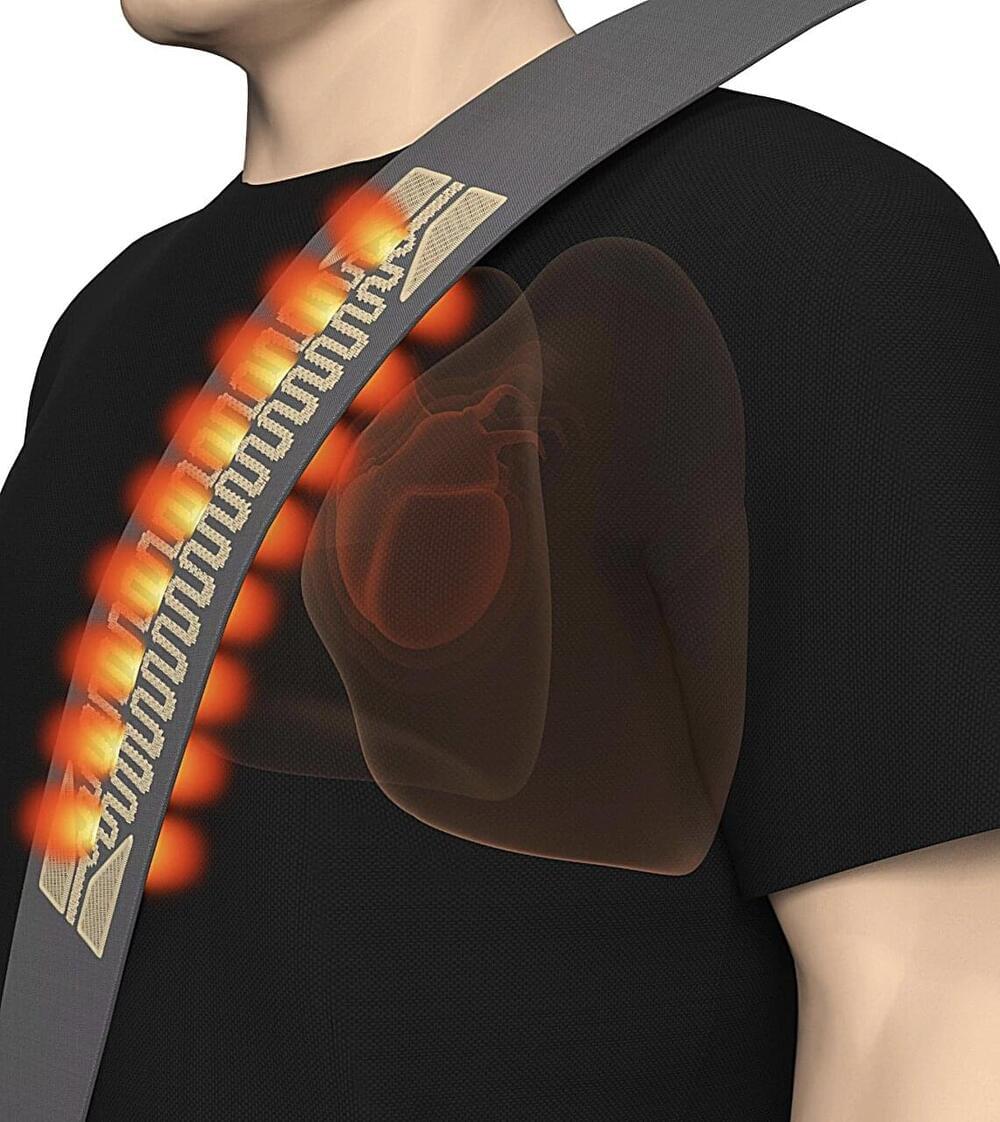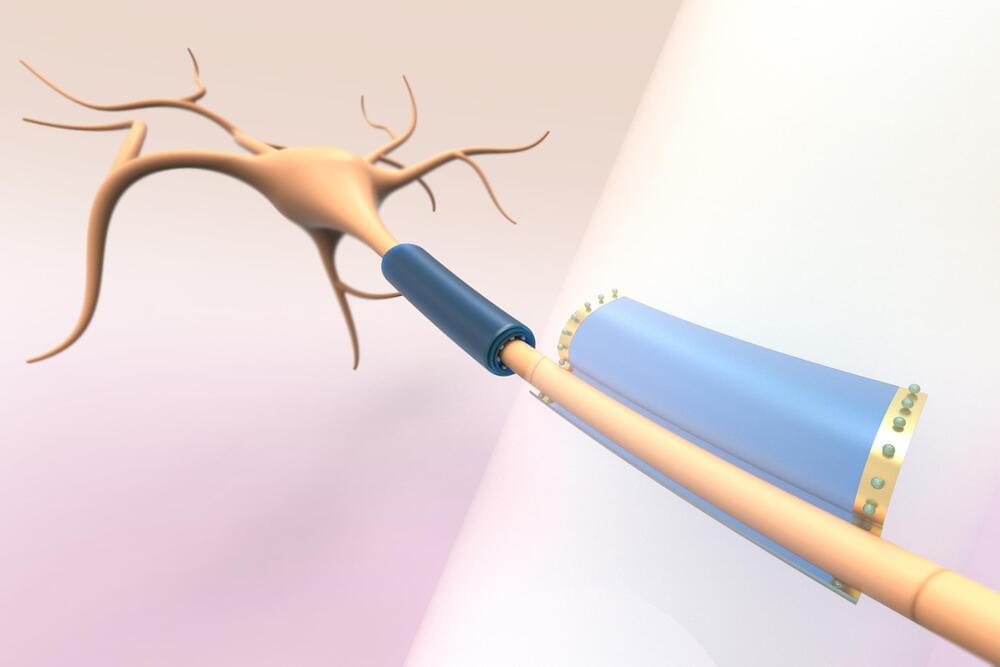QUT researchers develop a film that converts body heat into electricity, potentially eliminating the need for batteries in wearable tech.


’The world’s best’ graphene ink, which can be used for printed electronics—such as an intelligent t-shirt that measures your pulse—has been developed in collaboration with the Danish Technological Institute in a MADE demonstration project. The newly developed ink has already opened new markets for the company Danish Graphene.
Imagine a super-strong spider web that can bend and stretch without breaking.
This spider web can conduct electricity better than almost anything else. That’s how graphene works.
Noting that recent advances in artificial intelligence and the existence of large-scale experimental data about human biology have reached a critical mass, a team of researchers from Stanford University, Genentech, and the Chan-Zuckerberg Initiative says that science has an “unprecedented opportunity” to use artificial intelligence (AI) to create the world’s first virtual human cell. Such a cell would be able to represent and simulate the precise behavior of human biomolecules, cells, and, eventually, tissues and organs.
“Modeling human cells can be considered the holy grail of biology,” said Emma Lundberg, associate professor of bioengineering and of pathology in the schools of Engineering and Medicine at Stanford and a senior author of a new article in the journal Cell proposing a concerted, global effort to create the world’s first AI virtual cell. “AI offers the ability to learn directly from data and to move beyond assumptions and hunches to discover the emergent properties of complex biological systems.”
Lundberg’s fellow senior authors include two Stanford colleagues, Stephen Quake, a professor of bioengineering and science director at the Chan-Zuckerberg Initiative, and Jure Leskovec, a professor of computer science in the School of Engineering, as well as Theofanis Karaletsos, head of artificial intelligence for science at the Chan Zuckerberg Initiative, and Aviv Regev executive vice president of research at Genentech.


A research team affiliated with UNIST has unveiled an ultra-strong adhesive patch platform that adheres effectively to rough skin surfaces and shows remarkable motion adaptiveness during dynamic body movements, all while offering irritation-free removal on demand. The key to this technology lies in the surface adaptability inspired by barnacles and armadillo carapaces, which feature a tessellated structure that balances rigidity and flexibility.
The team, led by Professor Hoon Eui Jeong from the Department of Mechanical Engineering and Professor Jae Joon Kim from the Department of Electrical Engineering at UNIST, along with researchers from the National Institute of Ecology (NIE), has introduced a highly adhesive, detachable, and stretchable skin patch, known as the Motion Adaptive Tessellation Patch.
This innovative technology is garnering attention for its potential to facilitate the commercialization of wearable electronic devices, such as health care monitoring systems and transdermal drug delivery systems. The research is published in the journal Advanced Materials.

A new composite material developed by KIMS researchers absorbs over 99% of electromagnetic waves from different frequencies, improving the performance of devices like smartphones and wearables.
A team of scientists from the Korea Institute of Materials Science (KIMS) has developed the world’s first ultra-thin film composite material capable of absorbing over 99% of electromagnetic waves from various frequency bands, including 5G/6G, WiFi, and autonomous driving radar, using a single material.
This novel electromagnetic wave absorption and shielding material is less than 0.5mm thick and is characterized by its low reflectance of less than 1% and high absorbance of over 99% across three different frequency bands.
From brain implants that allow paralyzed patients to communicate to the wearable devices enhancing our capabilities, brain-computer interfaces could change the way we use our minds forever.
——-
Like this video? Subscribe: https://www.youtube.com/Bloomberg?sub_…
Get unlimited access to Bloomberg.com for $1.99/month for the first 3 months: https://www.bloomberg.com/subscriptio…
Bloomberg Originals offers bold takes for curious minds on today’s biggest topics. Hosted by experts covering stories you haven’t seen and viewpoints you haven’t heard, you’ll discover cinematic, data-led shows that investigate the intersection of business and culture. Exploring every angle of climate change, technology, finance, sports and beyond, Bloomberg Originals is business as you’ve never seen it.
Subscribe for business news, but not as you’ve known it: exclusive interviews, fascinating profiles, data-driven analysis, and the latest in tech innovation from around the world.
Visit our partner channel Bloomberg Quicktake for global news and insight in an instant.


Over the past decades, electronics and biomedical engineers have developed increasingly sophisticated biosensors, devices that can pick up biological signals from human users. These sensors, which are generally embedded in wearable or implantable technologies, often do not perform as well in settings where users are moving a lot, such as within a vehicle.
Researchers at the National University of Singapore and Tsinghua University have recently developed a new sensor that can pick up and track biological signals, such as the heartbeat and respiration, without being in contact with the body of users. This sensor, presented in a paper published in Nature Electronics, could be used to pick up the cardiopulmonary signals of humans while they are in dynamic and closed environments, such as a plane cabin, a moving car or a bus.
“Monitoring drivers’ alertness or stress is essential for road safety,” Xi Tian, co-author of the paper, told Tech Xplore. “Existing sensors designed to measure physiological markers of fatigue, such as heart rate and respiration, face challenges in moving vehicles due to the unpredictable vibrational noise. To overcome these challenges, our research focused on developing an automotive biosensor capable of non-contact and reliable health monitoring in dynamic environments.”
